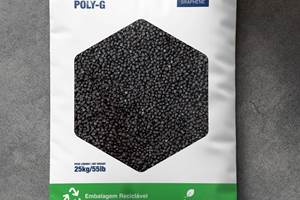Fly-Ash Filler Stages a Comeback
Fly ash, a silica and alumina residue collected from the chimneys of coal-fired power plants and incinerators, is both a waste product and a promising low-cost filler for plastics.
Fly ash, a silica and alumina residue collected from the chimneys of coal-fired power plants and incinerators, is both a waste product and a promising low-cost filler for plastics. For 50 years, most fly ash has gone into cement, where it improves compressive strength and curing. Refined fly-ash fillers have been used in liquid-resin applications like vinyl plastisols and thermoset bulk and sheet molding compounds for decades.
Now a number of suppliers are trying to develop thermoplastic markets. In particular, fly ash has surfaced in automotive and construction applications that involve not only melt compounding but also much higher loadings than ever before.
Loading up on ash
For years, compounders located near coal-fired power plants have put small amounts (1-2%) of ash into dark-colored compounds to save money and add stiffness. Sources at the American Coal Ash Association, Alexandria, Va., say products from Stanley Tool handles to parts on early General Motors Corvettes included small amounts of fly ash. But there were no known applications with high loadings until about five years ago when Lex Technologies in Mississauga, Ont., compounded 50-80% ash into recycled PE to make building materials.
Although that company went bankrupt, at least three commercial projects since then use 25-70% ash. The highest loadings<60-80%
Compounds of up to 50% fly ash are being extruded and compression molded into building materials like roof shakes and lumber. The ash adds stiffness and reduces cost. Ecomat Inc., Poughkeepsie, N.Y., began using 25% fly ash in roofing and lumber two years ago. Its compounds for recycled-polyethylene plastic lumber now use 50% fly ash and are foamed to the density of wood. Ecomat, which holds patents on compounding with a variety of odd mineral fillers
Compounds of 15-30% fly ash are in prototype testing for injection-molded car trim. Besides adding stiffness, fly ash raises the "recycled" content of auto parts. Vi-Chem Corp., Grand Rapids, Mich., is conducting long-term weather testing of vinyl and TPE auto trim compounds containing fine-particle (below 20 microns) fly ash. Vi-Chem uses both single- and twin-screw extruders. "The choice of single versus twin is resin driven," says Vi-Chem research chemist Bo Wang. "If you don't need intense mixing for the matrix resin, you use a single screw."
Pros and cons
Properties of fly ash are much like those of calcium carbonate but with significant differences. Fly ash is essentially finely powdered sand but without sharp edges like calcium carbonate. The ash consists of small balls
The spheres add stiffness and compressive strength to plastic compounds, but at the expense of increased brittleness. On the other hand, some processors who use ash say the spheres act like small ball bearings to improve throughput. Fly ash also comes in an amorphous, non-spherical form, which is of little current commercial use.
Fly ash is less dense (2.22 g/cc) than calcium carbonate (2.7 g/cc). Thus, in compounds, 30% by weight fly ash can replace 36% calcium carbonate while retaining the same volume fraction, says Vi-Chem's Wang.
Color is one drawback. Fly ash is dirty gray or tan, whereas calcium carbonate is bright white, so fly ash can be used only in dark-colored compounds. Also, fly ash is abrasive, but how abrasive depends on the type of ash
Fly ash is inconsistent in properties and particle size (1-100 microns with 25-50% being >10 microns). Prices range from $13 to $28/ton (0.65-1.4¢/lb, depending on consistency. Refined grades can cost twice that or more. Processors can also ensure higher quality by obtaining fly ash from consistent sources. "It's important to get it not just from one utility plant, but from one unit at one utility," says Aron McBay, manager of new-product development at Boral Technologies, Phoenix, which classifies and supplies fly ash as a cement filler.
Some ash also contains undesirable residues of activated carbon, which adsorb oils and resins. So commercial fly ash comes only from coal-burning utilities. Fly ash (as distinct from bottom ash collected at the bottom of furnaces) will trap 99% of any heavy-metal contamination in what was burned. So ash from waste-to-energy incinerators or municipal garbage, which may contain lead and mercury, isn't used in plastics.
Related Content
Masterbatches Reduce Gloss in PLA and PETG 3D Printed Products
Insight Polymers & Compounding’s two low-gloss additive masterbatches shown to boost appearance of 3D printed objects.
Read MoreIntrinsic Viscosity Enhancer for rPET and PET Food-Contact Applications
Nexam’s Nexamite MO2100 rebuilds molecular weight and increases IV to enable upcycling of rPET.
Read MoreGerdau Graphene Launches “First” Graphene-Enhanced PE Additive Masterbatch for Extruded Packaging and More
The company has also partnered with conglomerate Sumitomo Corp. for distribution of its graphene-enhanced masterbatches in Japan.
Read MoreCompatibilizer for Nylon/ABS Alloys
CAI Performance Additives’ ST-AN3230 has shown to improve both compatibility and performance of nylon/ABS alloys.
Read MoreRead Next
Making the Circular Economy a Reality
Driven by brand owner demands and new worldwide legislation, the entire supply chain is working toward the shift to circularity, with some evidence the circular economy has already begun.
Read MoreFor PLASTICS' CEO Seaholm, NPE to Shine Light on Sustainability Successes
With advocacy, communication and sustainability as three main pillars, Seaholm leads a trade association to NPE that ‘is more active today than we have ever been.’
Read MorePrecision Processing Requires Precision Equipment
Moretto offers plastics processors and micromolders for a broad suite of auxiliary solutions targeted specifically for precision processing.
Read More











